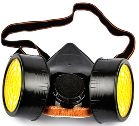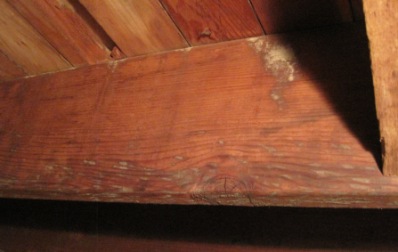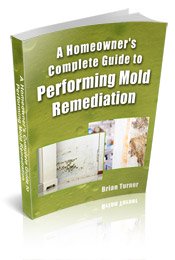Find a Mold Specialist Now
Click or Call, Toll-Free 24/7
Removing Mold On Wood
Mold on wood and other surfaces in the home can lead to a variety of medical symptoms, like respiratory symptoms and skin irritation. Removing mold from household surfaces is necessary for a healthy home, but removing mold from wood can be quite a challenge.
While you’re cleaning the mold from wooden surfaces, look for other places mold may be hiding. For instance, examine carpet and the padding under carpet carefully. If you only clean the mold from wooden surfaces but leave other mold behind, the surfaces you spend so much time cleaning will soon become contaminated again. Mold grows and spreads rapidly. It is also unlikely that you only have mold in one spot, so if you have some moldy wood, look elsewhere to make certain you get it all.
Safety Gear

Before you begin addressing mold on wood, arm yourself with safety gear. You need an N-95 face mask (most home improvement stores carry the right ones), plastic goggles, rubber gloves (use disposable gloves if you prefer), and long pants and a long sleeved shirt that you can launder as soon as you’re done removing mold from wood. Attempting to remove mold without the proper safety gear is just setting yourself up for health problems. If you suffer from respiratory problems or are suffering from health problems related to mold, you might want to have a professional handle the cleanup for you so that you don’t aggravate your condition.
Items to Discard
Very porous items, like drywall (sheetrock) cannot be adequately cleaned, so they must be discarded and replaced. It’s just not possible to remove all the mold from those kinds of items. If you cannot clean it, you should not keep it. If you keep an item with just a little mold on it, that small amount of mold on wood will grow in time and you could have a big mold problem. If you’re not sure if something can be cleaned or the best way to clean it, consult with a professional mold removal specialist.
Removing Mold from Wood

Sometimes you can scrub mold off wood, but because most wooden surfaces are somewhat porous, it’s often impossible to remove all the mold without sanding it down. If you want to try, use a non-ammonia soap or detergent. Cleansers containing ammonia or bleach may not penetrate the surface and get all the mold. Never mix ammonia and bleach; the fumes are toxic. Wear rubber gloves when scrubbing moldy wood.
Sanding Wood
Sanding is often the best way to remove mold on wood such as wall studs, but it is a dangerous undertaking and should only be attempted by trained professionals. They will wear protective gear, including a face mask, and isolate the area in which they are working from the rest of the home by hanging sheets of plastic over doorways, hi-hats and vents. The North Dakota State University Extension Service suggests lightly dampening the wood before it is sanded, so that mold spores do not fly around in the air. A negative pressure environment should be set up so that no airborne mold contaminates other areas of the home.
Preventing Mold on Wood from Recurring
After you have removed all of the mold from wood, you need to keep it from coming back. First, make sure you remove every bit of mold, because otherwise, it will just grow and spread.
Once you’re sure you’ve removed it all, you need to figure out where the moisture was coming from and how to keep the area dry. Mold will not grow if it’s dry but if an area remains damp, mold will quickly return. Dehumidifiers may help in basements or other damp areas that are hard to dry out.
Consider Encapsulation
In some areas, mold removal specialists will recommend encapsulating wood to prevent growth of mold on the wood surfaces. Encapsulation may not be appropriate in all instances but a professional contractor can advise you.
When to Consult with a Mold Removal Specialist
If you’ve got mold growing on wooden surfaces, we recommend consulting with a mold removal specialist. Most offer free consultations and even if you end up deciding to handle the mold removal yourself, you can gain some helpful advice from a professional. It’s especially important to consult a professional if you:
- Aren’t sure where the moisture was coming from and so aren’t sure how to correct the problem.
- Aren’t sure whether or not you’ve successfully removed all the mold.
- Think encapsulation might be appropriate on a wooden surface affected by mold.
- Have respiratory problems or mold-related health problems.
Just follow this link for a list of mold removal specialists offering free consultations in your area.
Return From Mold On Wood To Our Mold In Homes Page
Black Mold Health Symptoms Home Page





